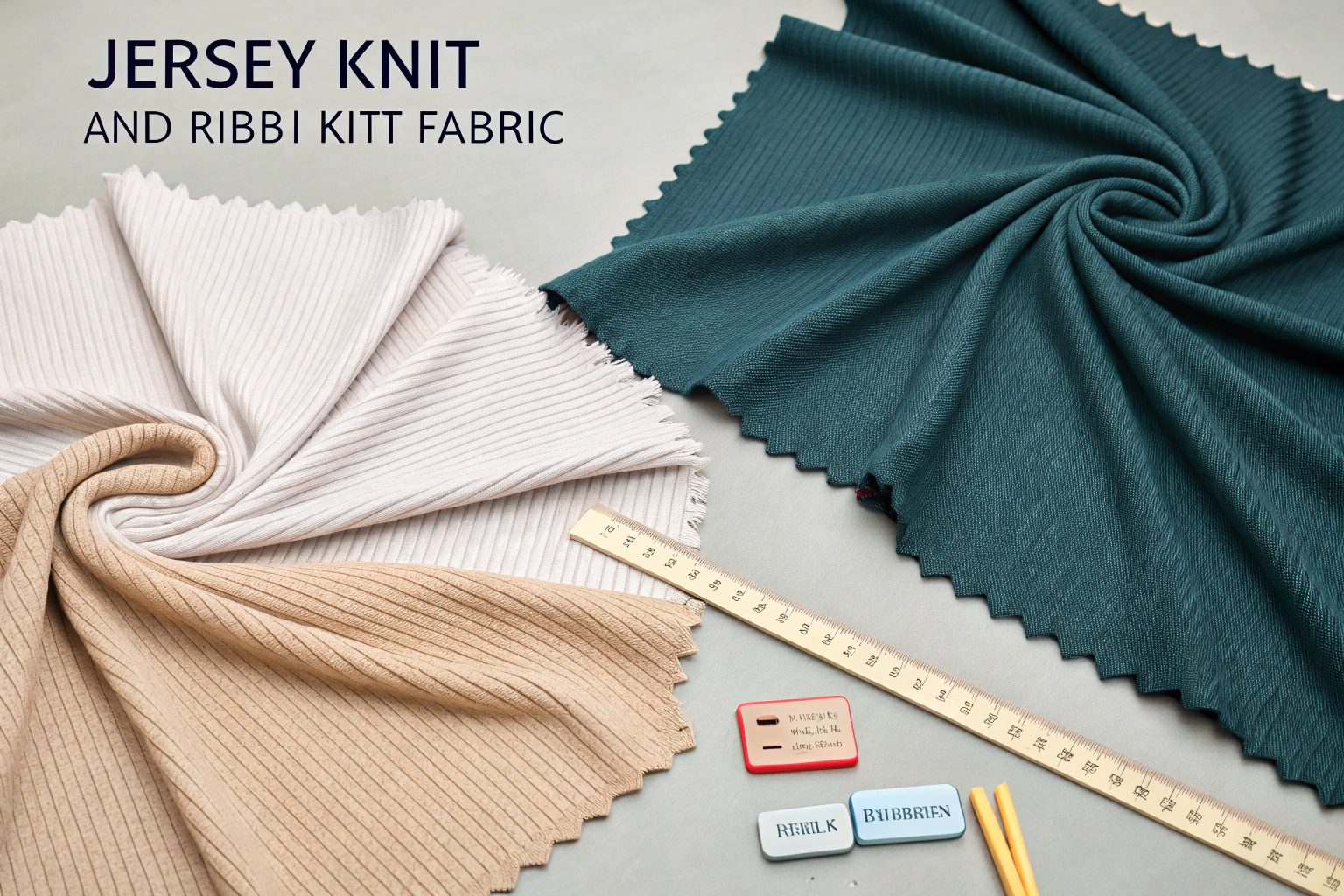When navigating the world of fabric options, understanding the nuances between different types of knit fabrics can be crucial for achieving the desired result. Among the most common are jersey knit and rib knit, each offering distinct qualities. By understanding their differences, you can make informed decisions on which fabric is most suitable for your specific project, whether it’s for fashion or performance wear.
Jersey knit and rib knit are both made using interlooped yarns, but their texture, stretch properties, and use cases vary significantly. Jersey knit provides a smooth, soft surface with a moderate stretch in one direction, making it ideal for casual and comfortable clothing. Rib knit, however, is characterized by alternating raised and recessed lines, providing superior elasticity and a firmer feel. This makes rib knit perfect for garments requiring more structure, like cuffs and waistbands.
While both fabrics are versatile, understanding their performance characteristics will guide your choice in terms of aesthetics, comfort, and fit. Now let’s explore the distinctive features of each knit fabric in more detail to help you determine which one is best for your next design.
What Are the Key Features of Jersey Knit?
Jersey knit is one of the most widely used fabrics, known for its softness, flexibility, and fluidity. This fabric is commonly found in a variety of everyday clothing items and offers an ideal balance of comfort and style.
Jersey knit features a smooth, flat surface on one side and a slightly textured back. It’s made with a simple knit stitch, allowing the fabric to stretch in one direction. The result is a fabric with a natural drape, making it an excellent choice for relaxed, comfortable clothing such as t-shirts, dresses, and activewear.
The smooth surface of jersey knit makes it an easy-to-care-for fabric, resistant to wrinkles and requiring minimal maintenance. Its fluidity and drape make it ideal for casual designs, where a soft feel and freedom of movement are key. Whether it’s for graphic tees or athleisure wear, jersey knit is known for its breathability and comfort, perfect for garments that are worn frequently.
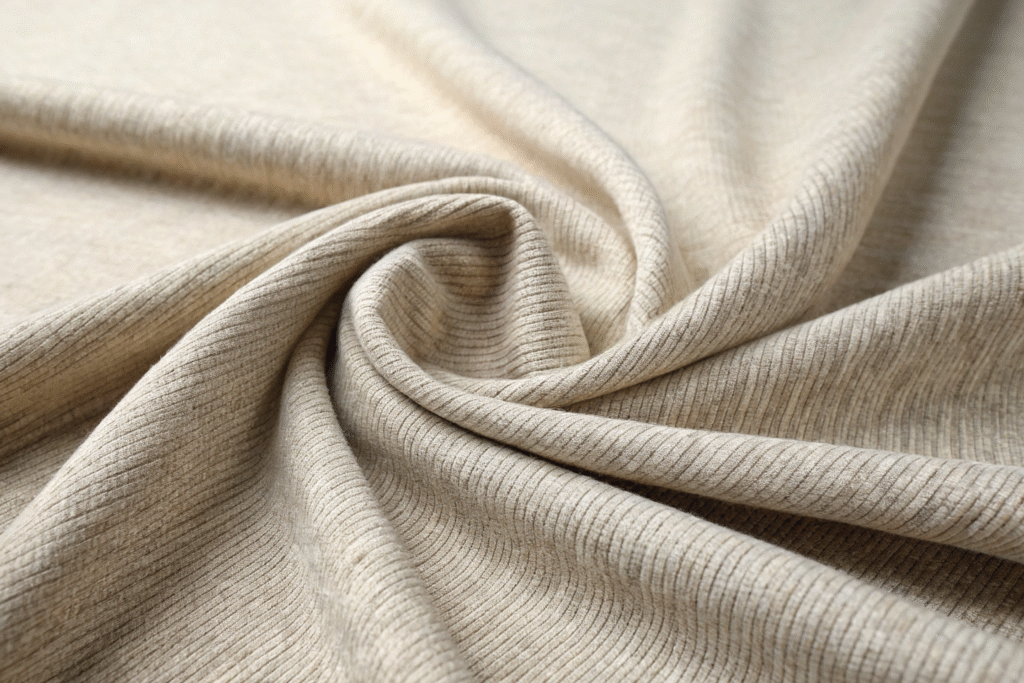
Why is Jersey Knit Popular for Casual Wear?
Jersey knit’s combination of softness and flexibility makes it the fabric of choice for a wide range of casual garments. Its stretch and smooth texture ensure comfort without sacrificing style.
What Are the Common Uses of Jersey Knit?
Jersey knit is used in the production of t-shirts, dresses, leggings, and baby clothes, thanks to its breathable, lightweight qualities and its ability to adapt to different shapes.
What Are the Key Features of Rib Knit?
Rib knit stands apart with its distinct texture and superior elasticity. Ideal for garments that require both stretch and durability, rib knit offers a unique option for those looking to add structure and flexibility to their designs.
Rib knit is made by alternating raised and recessed lines, creating a textured, stretchy surface. This fabric is highly elastic, making it perfect for garments that need to retain their shape, such as cuffs, collars, and waistbands. Rib knit is firmer and thicker than jersey knit, providing more structure and support.
Due to its ribbing structure, rib knit stretches in both directions, offering enhanced elasticity. This characteristic makes it suitable for form-fitting designs that require both flexibility and shape retention. The texture not only enhances the fabric's functional properties but also adds a visual appeal, making rib knit a popular choice for stylish yet durable garments.
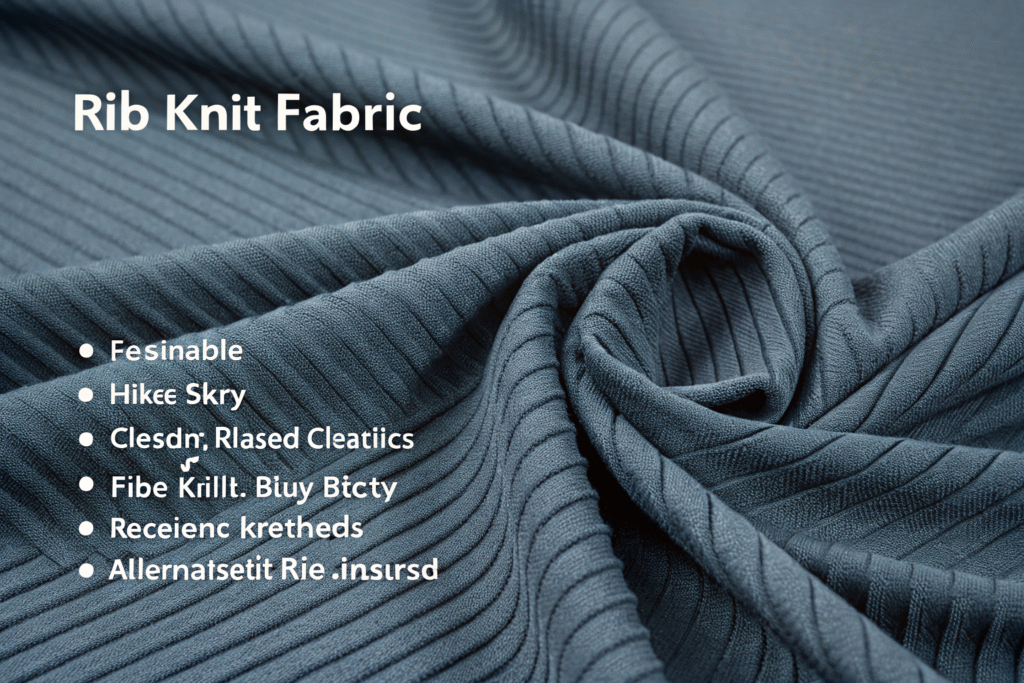
How Does Rib Knit Differ in Elasticity from Jersey Knit?
Rib knit provides greater elasticity compared to jersey knit due to its structure, which allows it to stretch both horizontally and vertically. This feature is essential for garments that need extra stretch and recovery.
What Are the Best Applications for Rib Knit Fabrics?
Rib knit is ideal for applications where stretch, structure, and durability are needed, such as sweater cuffs, necklines, and other tightly fitted garment parts.
What Are the Main Differences in Texture and Stretch Between Jersey Knit and Rib Knit?
The texture and stretch properties of these two fabrics are key factors in distinguishing them from each other. Understanding these characteristics will help you decide which fabric is best for your project.
Jersey knit has a smooth surface that allows for a soft, fluid drape. It stretches naturally in one direction, offering moderate flexibility. On the other hand, rib knit's textured surface, formed by alternating raised ridges, provides more stretch in both horizontal and vertical directions. This results in a firmer and more resilient fabric, ideal for garments that require more structure and elasticity.
The structure of jersey knit makes it a softer, more flexible fabric that flows well, while rib knit’s firmness and enhanced elasticity make it a better choice for clothing that needs to hold its shape. Jersey knit is often favored for its smooth finish and comfort, whereas rib knit is selected for its ability to stretch and recover, especially in more fitted designs.
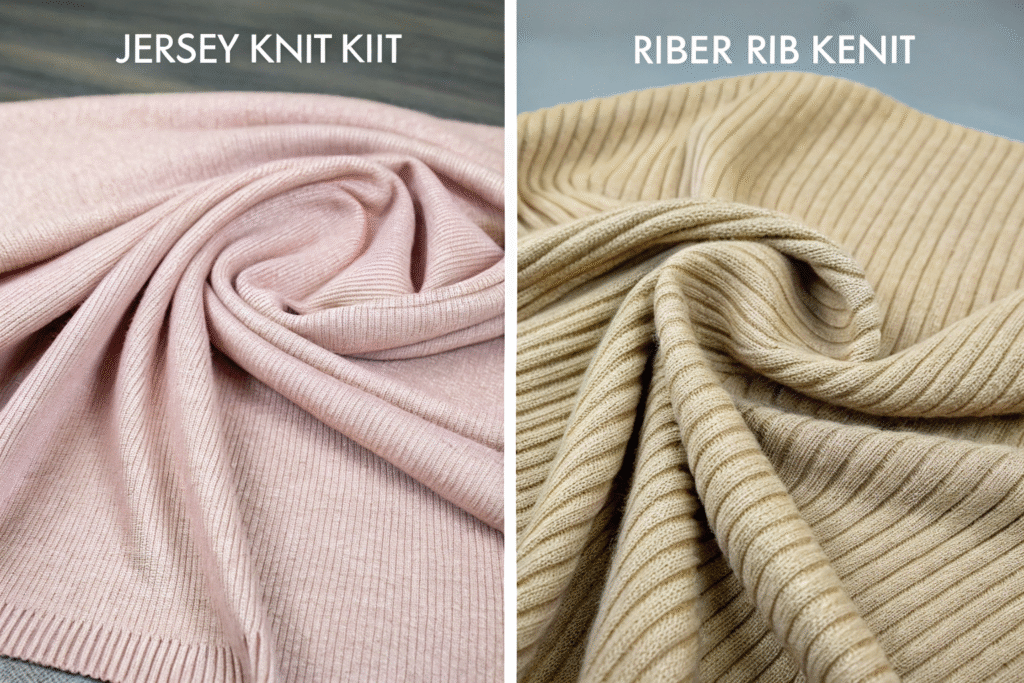
How Do Jersey Knit and Rib Knit Differ in Comfort?
Jersey knit offers a softer feel and a more fluid drape, making it comfortable for casual, everyday wear. Rib knit, with its thicker texture and firmer stretch, offers more support, making it ideal for more structured garments.
Does Rib Knit Retain Its Shape Better Than Jersey Knit?
Yes, rib knit maintains its shape better than jersey knit due to its superior stretch and recovery properties. It holds its form even after repeated use, which is a crucial feature for garments like cuffs, collars, and waistbands.
Which Fabric is Best for Your Project?
Choosing between jersey knit and rib knit ultimately depends on your design goals. Whether you need a soft, comfortable fabric or one that offers more structure and elasticity, understanding these fabrics' specific properties will help you make the right decision.
Jersey knit is often the preferred choice for projects requiring comfort, breathability, and flexibility, such as casual wear or loungewear. Rib knit, however, is better suited for items that need structure and elasticity, such as activewear or garments with fitted elements like cuffs and waistbands. Your decision should depend on the overall requirements of your garment or design project.
Both fabrics have their merits, with jersey knit being ideal for lightweight, breathable garments and rib knit excelling in garments that require additional support and structure. If you need a fabric that’s both soft and drapey, jersey knit is your best bet. If you need a fabric that retains its shape and provides more stretch, rib knit is the better option.
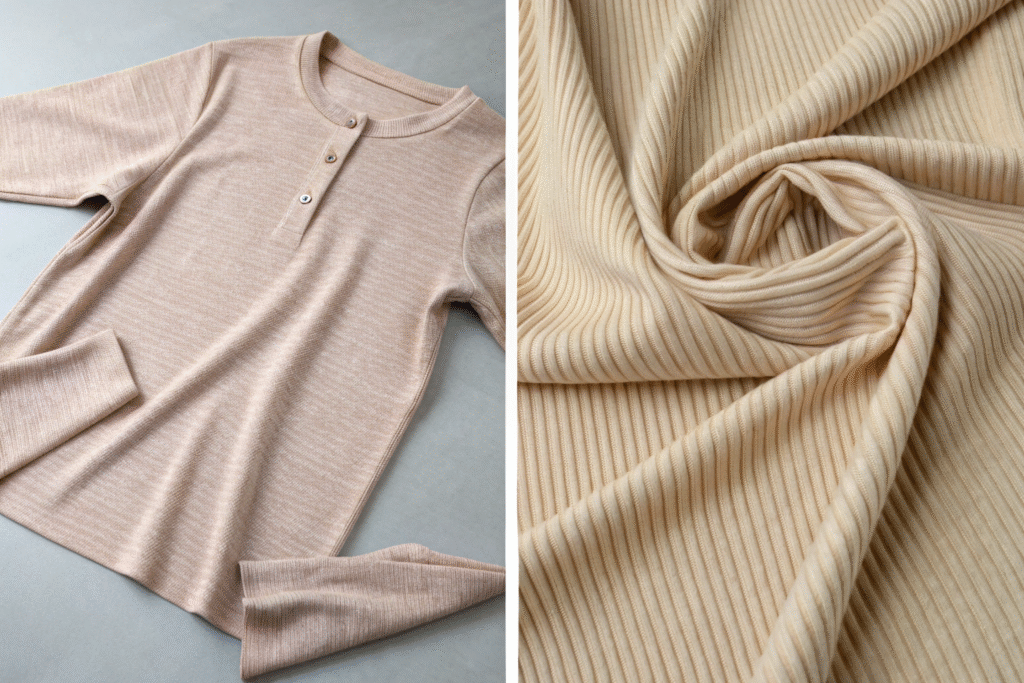
How Can You Choose Between Jersey Knit and Rib Knit?
To choose the right fabric, think about your design’s needs. For casual, relaxed clothing, jersey knit is the best option. For more structured garments that need extra stretch and support, rib knit is ideal.
Are Both Fabrics Suitable for Activewear?
Both fabrics can be used in activewear, though each has a different role. Jersey knit is great for lightweight, breathable pieces, while rib knit is perfect for items that need to hold their shape and offer more stretch and recovery.
Conclusion
To sum up, the primary difference between jersey knit and rib knit lies in their structure, elasticity, and suitability for different types of garments. Jersey knit is perfect for casual, flexible wear, offering comfort and softness, while rib knit provides more structure, elasticity, and shape retention. By considering the specific requirements of your project, you can choose the fabric that will best complement your design.
For help in selecting the right fabric for your next project, feel free to reach out to us at Fumao Fabric. Our team is here to assist you with all your fabric needs, from sourcing to delivery. Contact our Business Director, Elaine, at elaine@fumaoclothing.com for custom fabric orders and more information on how we can collaborate to bring your vision to life.

